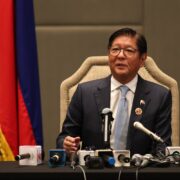Discarded experiments

I believe the Fifth Republic fell in 2016. This fall, in turn, could be dated to 2006; and while the republic as it was envisioned in 1987 fell nearly a decade ago, it will continue to exist in a zombie form until such time as this republic comes to a formal end with a new Constitution.
Two choices made in 1987 that set apart our Fifth Republic from its predecessors have been vetoed.
The first is the one currently in the headlines: the belief that, unlike anywhere else, impeachment should be easy. Rather than making it the instrument of last resort as it is in the United States, it was designed by the Constitutional Commission to serve as a constant threat to those in high office.
The second choice was advocated by former chief justice Roberto Concepcion in atonement for the cowardice of the Supreme Court in the months from September 1972 to January 1973, when it remained the last institution capable of resisting the dictatorship. He believed that the failure of principle, nerve, or whatever you want to call it during those years could be compensated for by practically eliminating the old principle that the high court had no business weighing in on purely political questions. As a fundamental matter of respect for coequal branches, this principle restricted the judiciary to questions of law rather than ones best left to the sovereign people to address through their elected institutions. It would be replaced by the obligation for the Supreme Court to determine if there had been “a grave abuse of discretion amounting to lack or excess of jurisdiction,” essentially giving it carte blanche to probe into nearly all the acts of other branches.
Concepcion, in his sponsorship speech, cited the notorious case that led him to resign (in disgust or protest) ahead of retirement: Javellana v. Executive Secretary. This is not the place to delve too deeply into the speech or the case, but two observations illustrate a point I want to make.
First, one lawyer quipped that after their fourth beer, in private, you might often hear the opinion that, “the more convoluted and difficult to understand a decision, the more likely it was that there were other considerations.” The second is one a definitely sober lawyer made when I asked about the Supreme Court case in the headlines: “The Supreme Court should have had public hearings to hear all sides in such an important case.”
The framers of the 1987 Constitution distorted what had been well-established practices in republican constitutions in the hope that it would serve as a corrective to past abuses caused by servility in the face of authority. They even went so far as to change the fundamental setup of our system. As one lawyer reminded me some years back, we actually have four branches of government: the executive, the legislative, the judicial, and the constitutional commissions, which are apart from all three but, most importantly, are beyond the authority of the executive.
Similarly, the power of the legislature was diluted to the extent that the framers wanted citizens to be able to propose laws and initiate referendums, while, as seen above, the authority of the judiciary was expanded.
Here comes the law of unintended consequences, where constitutional distortion, well-intentioned—unintentionally—provided the means for a different kind of distortion: an empowered judiciary that ended up essentially amending the Constitution to reverse the innovations made in the Constitution.
The first involved the decisions that essentially ruled out people’s initiative as a means of amending the Constitution.
Next, this was combined with the earlier, unintentional inability of the framers to notice they’d written provisions on martial law review and charter amendments for a unicameral legislature, only to approve a bicameral one without going back to revise their earlier language. The effect of this was to make it virtually impossible for the legislature to propose amendments to the Constitution without risking a confrontation sooner or later between its two chambers.
The third was the revival of quo warranto as a means of eliminating an official—the chief justice, who replaced the one impeached and convicted—without need of recourse to the increasingly loathsome route of impeachment (from both nonlegislative branches’ point of view).
The fourth, if the critics—including two former chief justices, one senior associate justice who should have been chief justice, and another associate justice who drafted the language of the constitutional provision on impeachment—are to be believed, will have the unintended consequence of neutering impeachment itself as an instrument of accountability.


















Challenging the corrupt: A test of political will